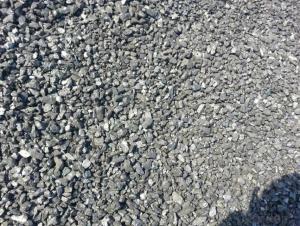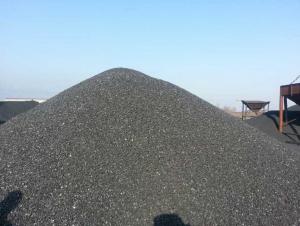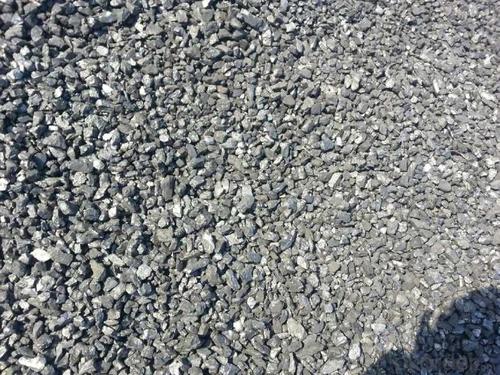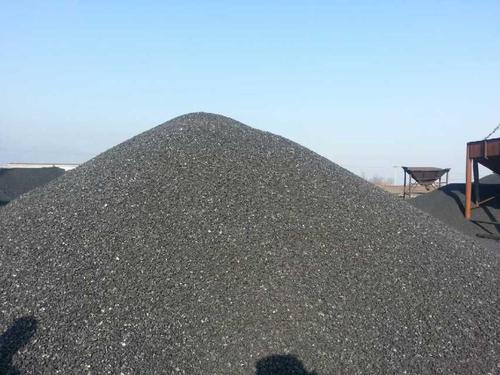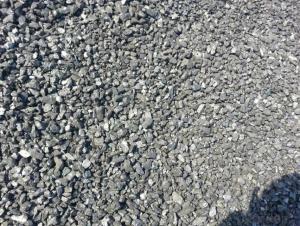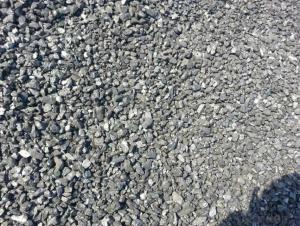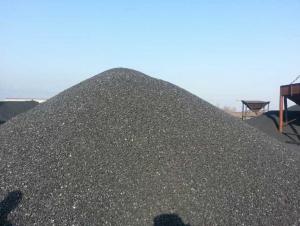Recarburizer FC90-95 with stable quality
- Loading Port:
- Tianjin
- Payment Terms:
- TT OR LC
- Min Order Qty:
- 20 m.t.
- Supply Capability:
- 3000 m.t./month
OKorder Service Pledge
OKorder Financial Service
You Might Also Like
Packaging & Delivery
25kgs/50kgs/1ton per bag or as buyer's request
Specifications
Calcined Anthracite
Fixed carbon: 90%-95%
S: 0.5% max
Size: 0-3. 3-5.3-15 or as request
It used the high quality anthracite as raw materials through high temperature calcined at over 2000 by the DC electric calciner with results in eliminating the moisture and volatile matter from anthracite efficiently, improving the density and the electric conductivity and strengthening the mechanical strength and anti-oxidation. It has good characteristics with low ash, low resistvity, low sulphur, high carbon and high density. It is the best material for high quality carbon products.
Advantage and competitive of caclined anthracite:
1. strong supply capability
2. fast transportation
3. lower and reasonable price for your reference
4.low sulphur, low ash
5.fixed carbon:95% -90%
6..sulphur:lower than 0.3%
General Specification of Calcined Anthracite:
| FC | 95 | 94 | 93 | 92 | 90 |
| ASH | 4 | 5 | 6 | 6.5 | 8.5 |
| V.M. | 1 | 1 | 1 | 1.5 | 1.5 |
| S | 0.3 | 0.3 | 0.3 | 0.35 | 0.35 |
| MOISTURE | 0.5 | 0.5 | 0.5 | 0.5 | 0.5 |
Pictures
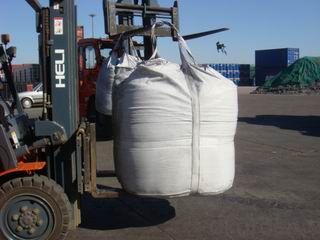
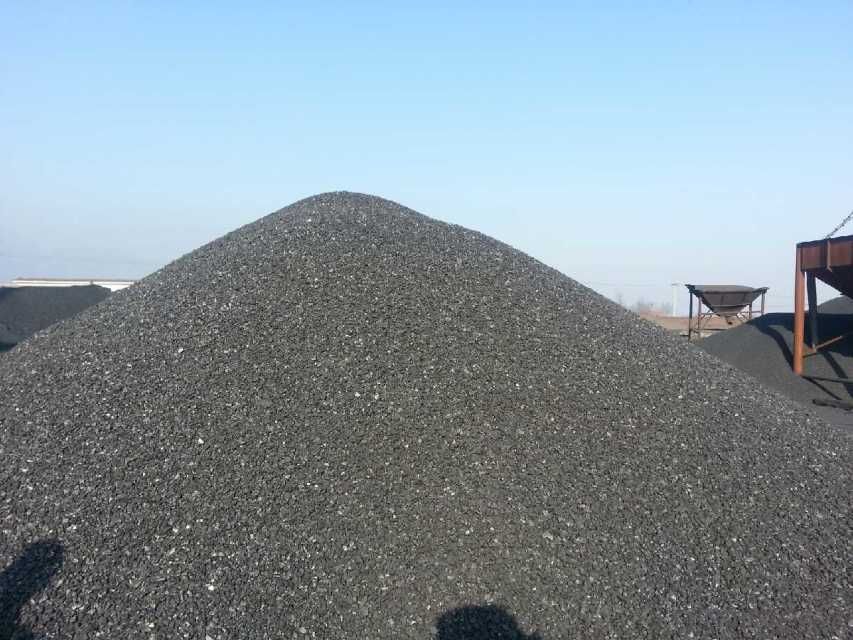
- Q: How is carbon used in the production of plastics?
- Carbon is used in the production of plastics through a process called polymerization. Carbon atoms are linked together to form long chains or networks known as polymers, which give plastics their characteristic properties. These carbon-based polymers can be molded into various shapes and sizes to create a wide range of plastic products that are used in our daily lives.
- Q: How does carbon affect water quality?
- Carbon can have both positive and negative effects on water quality. On one hand, carbon is a natural part of the carbon cycle and plays a crucial role in maintaining the balance of aquatic ecosystems. Carbon can act as a nutrient for aquatic plants, promoting their growth and providing food and habitat for other organisms within the food chain. However, excessive amounts of carbon in water can lead to negative impacts on water quality. One way this occurs is through an increase in dissolved organic carbon (DOC). Elevated levels of DOC can result from the decomposition of organic matter, such as dead plants and animals, and the leaching of organic compounds from soil. These organic compounds can have negative effects on water quality by reducing the amount of dissolved oxygen available for aquatic organisms, which can lead to the suffocation of fish and other aquatic life. Additionally, high levels of carbon can contribute to the process of eutrophication. Eutrophication occurs when there is an excess of nutrients, including carbon, in water bodies, leading to an overgrowth of algae and other aquatic plants. This excessive growth can result in the depletion of oxygen levels in the water as the plants decompose, causing harm to fish and other organisms that rely on oxygen for survival. Furthermore, carbon can also interact with other pollutants present in water, such as heavy metals and pesticides, which can become more toxic and bioavailable when combined with carbon. This can have detrimental effects on aquatic organisms and disrupt the overall balance of the ecosystem. Overall, while carbon is essential for the functioning of aquatic ecosystems, excessive amounts can negatively impact water quality by reducing oxygen levels, promoting eutrophication, and enhancing the toxicity of other pollutants. Therefore, it is crucial to monitor and manage carbon levels in water bodies to ensure the maintenance of a healthy and balanced aquatic ecosystem.
- Q: What is the greenhouse effect?
- The greenhouse effect refers to the process by which certain gases in the Earth's atmosphere trap heat from the sun and prevent it from escaping back into space. This natural phenomenon is crucial for maintaining the planet's temperature within a range suitable for life. However, human activities, such as burning fossil fuels and deforestation, have intensified the greenhouse effect, leading to global warming and climate change.
- Q: How does carbon impact food production?
- Carbon impacts food production in several ways. Firstly, carbon dioxide (CO2) is a major greenhouse gas that contributes to climate change. Increased levels of CO2 in the atmosphere lead to higher temperatures, altered rainfall patterns, and more frequent extreme weather events, all of which can negatively affect crop growth and productivity. For example, excessive heat can reduce crop yields and quality, while intense rainfall or droughts can cause flooding or water scarcity, respectively, both of which can damage crops and reduce agricultural productivity. Furthermore, carbon emissions from agricultural practices, such as the use of synthetic fertilizers, deforestation for agriculture, and livestock production, contribute to the overall carbon footprint of the food system. These emissions exacerbate climate change, creating a vicious cycle where climate change negatively impacts food production, while food production contributes to climate change. Additionally, carbon emissions from the transportation and processing of food also impact its production. The transportation of food over long distances, often involving the use of fossil fuels, results in carbon emissions. Similarly, the processing and packaging of food require energy, often derived from fossil fuels, which further contributes to carbon emissions. To mitigate the carbon impact on food production, sustainable agricultural practices need to be adopted. This includes practices such as agroforestry, organic farming, and precision agriculture, which can help sequester carbon in soils, reduce the reliance on synthetic fertilizers, and improve overall soil health. Additionally, reducing food waste and promoting local and seasonal food consumption can reduce carbon emissions associated with transportation and processing. Overall, carbon impacts food production through its contribution to climate change and associated extreme weather events, as well as through emissions generated from agricultural practices and food processing. Addressing these impacts is crucial for ensuring food security and sustainability in the face of climate change.
- Q: Does anyone know what the definition of carbon storage is in ecology? Thank you
- If there is no clear definition of books on carbon storage in the understanding of ecology of the individual usually refers to the separation of gaseous carbon dioxide from the atmosphere, through the process of ecology carbon fixed, this process mainly refers to the plants convert carbon dioxide into carbohydrates.In addition, there is now another implication: carbon stripping technology will be used to collect carbon dioxide from human emissions into the air separation of the ground floor storage.
- Q: How does carbon impact the fertility of soil?
- Soil fertility relies heavily on carbon, which serves as the foundation for organic matter. Organic matter, derived from decaying plant and animal residues, enhances the soil's structure, nutrient-holding capacity, and water retention. This results in improved support for plant growth and microbial activity. Not only does organic matter supply carbon, but it also provides nutrients to plants through the process of decomposition. Microorganisms, fungi, and bacteria decompose organic matter and release nutrients like nitrogen, phosphorus, and potassium into the soil. These nutrients become available for plants to absorb. Additionally, carbon in organic matter binds soil particles, preventing erosion and improving soil structure. Furthermore, carbon plays a crucial role in water management for plants. It acts as a sponge, absorbing and retaining moisture, which helps sustain plant growth during dry periods. Carbon also fosters the growth of a diverse and healthy microbial community in the soil, including beneficial bacteria and fungi. These microorganisms contribute to nutrient cycling, disease suppression, and plant nutrient uptake, further enhancing soil fertility. However, it is important to avoid excessive carbon inputs or improper land management practices, as they can negatively affect soil fertility. An imbalance in carbon availability can lead to nitrogen immobilization, where microorganisms consume nitrogen for their own growth, depriving plants of this essential nutrient. Additionally, high carbon content can create anaerobic conditions, limiting oxygen availability for plant roots and beneficial soil organisms. To ensure optimal soil fertility, it is crucial to maintain a balanced carbon-to-nitrogen ratio and adopt sustainable land management practices. Carbon is an indispensable component for maintaining soil health by improving structure, nutrient availability, water retention, and microbial activity.
- Q: when to use hard carbon, and when to use soft carbon. Neutral charcoal can play what role? Thank you.
- Soft charcoal as easily broken, so soft to the name. Hard charcoal is not easy to break, of course, also called hard charcoal. Models are generally marked with charcoal, it is easy to distinguish. When used, you can also judge.
- Q: What are the impacts of carbon emissions on the stability of grasslands?
- Carbon emissions have significant impacts on the stability of grasslands. As carbon dioxide (CO2) is released into the atmosphere, it contributes to the greenhouse effect, leading to global warming. This increase in temperature has several detrimental effects on grasslands. Firstly, higher temperatures can disrupt the balance of grassland ecosystems. Many grassland species have specific temperature requirements for growth and reproduction. As temperatures rise, these species may struggle to adapt, leading to a decline in their populations. This can disrupt the overall biodiversity and ecological stability of grasslands. Secondly, global warming can alter precipitation patterns, leading to changes in water availability in grasslands. Reduced rainfall or increased evaporation can result in drought conditions, making it difficult for grasses to grow and thrive. This can lead to the desertification of grasslands, transforming them into barren areas devoid of plant life. Furthermore, carbon emissions contribute to the acidification of the oceans, which can indirectly impact grasslands. Acidic ocean waters affect marine organisms, including those responsible for generating nutrients that are carried by winds to coastal and inland grasslands. If these nutrient sources decline, grasslands may experience reduced fertility and productivity, affecting the stability of these ecosystems. Lastly, carbon emissions can also exacerbate the frequency and intensity of wildfires. Grasslands are naturally adapted to periodic fires, which play a crucial role in maintaining biodiversity and regulating plant populations. However, the increase in carbon dioxide levels can fuel more intense and frequent wildfires, which can destroy grasslands and make their recovery more challenging. In conclusion, carbon emissions have multiple negative impacts on the stability of grasslands. They disrupt the balance of grassland ecosystems, alter precipitation patterns, contribute to ocean acidification affecting nutrient sources, and increase the risk of wildfires. These effects can lead to biodiversity loss, desertification, reduced fertility, and overall instability in grassland ecosystems. It is crucial to reduce carbon emissions and mitigate the impacts of global warming to ensure the long-term stability and preservation of grasslands.
- Q: How does carbon affect the formation of blizzards?
- Carbon does not directly affect the formation of blizzards. Blizzards are intense winter storms characterized by strong winds, low temperatures, and heavy snowfall. They typically occur when a low-pressure system moves into an area with sufficient moisture and cold air. The primary factors that influence the formation of blizzards are temperature, moisture, and wind patterns. However, carbon emissions and their impact on the climate can indirectly influence the frequency and intensity of blizzards. Carbon dioxide (CO2) and other greenhouse gases trap heat in the atmosphere, leading to global warming. This warming effect can alter weather patterns, including the conditions necessary for blizzard formation. Warmer temperatures caused by carbon emissions can lead to changes in precipitation patterns, including increased moisture content in the atmosphere. This additional moisture, combined with the cold air necessary for blizzards, can contribute to heavier snowfall during these storms. Furthermore, climate change can affect wind patterns, which can impact the intensity and duration of blizzards. Changes in atmospheric circulation patterns can alter the tracks and strength of storms, potentially leading to more or less frequent blizzard events in certain regions. It is important to note that the specific impact of carbon emissions on blizzard formation varies depending on regional and local factors. The complex nature of weather systems and the interaction between different variables make it challenging to attribute any single weather event solely to carbon emissions. However, the overall influence of carbon emissions on the climate system increases the potential for more extreme weather events, including blizzards.
- Q: How does carbon impact the availability of clean drinking water?
- The availability of clean drinking water can be significantly affected by carbon through various processes. One major way carbon impacts water quality is through the formation of acid rain caused by carbon dioxide emissions. When carbon dioxide combines with water in the atmosphere, it forms carbonic acid, which can be extremely harmful to water bodies. Freshwater sources can be devastated by acid rain, primarily caused by the release of carbon emissions from industrial activities and the burning of fossil fuels. This can result in a decrease in the pH level of lakes, rivers, and groundwater, making the water more acidic. The increased acidity can harm aquatic life, destroy ecosystems, and make water sources unsuitable for drinking, agriculture, or industrial use. Furthermore, carbon can affect the availability of clean drinking water through its role in climate change. Excessive carbon emissions contribute to the greenhouse effect, leading to rising global temperatures and changes in weather patterns. These changes can cause prolonged droughts and intense rainfall events, both of which can have negative effects on water availability and quality. Climate change-induced droughts can cause water scarcity as precipitation patterns become less predictable and water sources dry up. This can result in conflicts over limited water resources and force communities to rely on contaminated or unsafe water sources. Conversely, intense rainfall events caused by climate change can lead to flooding, overwhelming sewage systems and contaminating drinking water with pollutants and pathogens. Additionally, carbon emissions are linked to the degradation of natural ecosystems, such as forests and wetlands, which play a crucial role in water purification. Forests act as natural filters, absorbing carbon dioxide and releasing oxygen, while wetlands naturally filter and cleanse water. When these ecosystems are destroyed or degraded due to deforestation or drainage, the availability of clean drinking water is further compromised. To conclude, carbon emissions have a significant impact on the availability of clean drinking water. Acid rain formation, climate change-induced droughts and floods, and the degradation of natural ecosystems all contribute to water scarcity and contamination. It is crucial to protect and reduce carbon emissions in order to ensure the availability of clean drinking water for both present and future generations.
Send your message to us
Recarburizer FC90-95 with stable quality
- Loading Port:
- Tianjin
- Payment Terms:
- TT OR LC
- Min Order Qty:
- 20 m.t.
- Supply Capability:
- 3000 m.t./month
OKorder Service Pledge
OKorder Financial Service
Similar products
Hot products
Hot Searches
